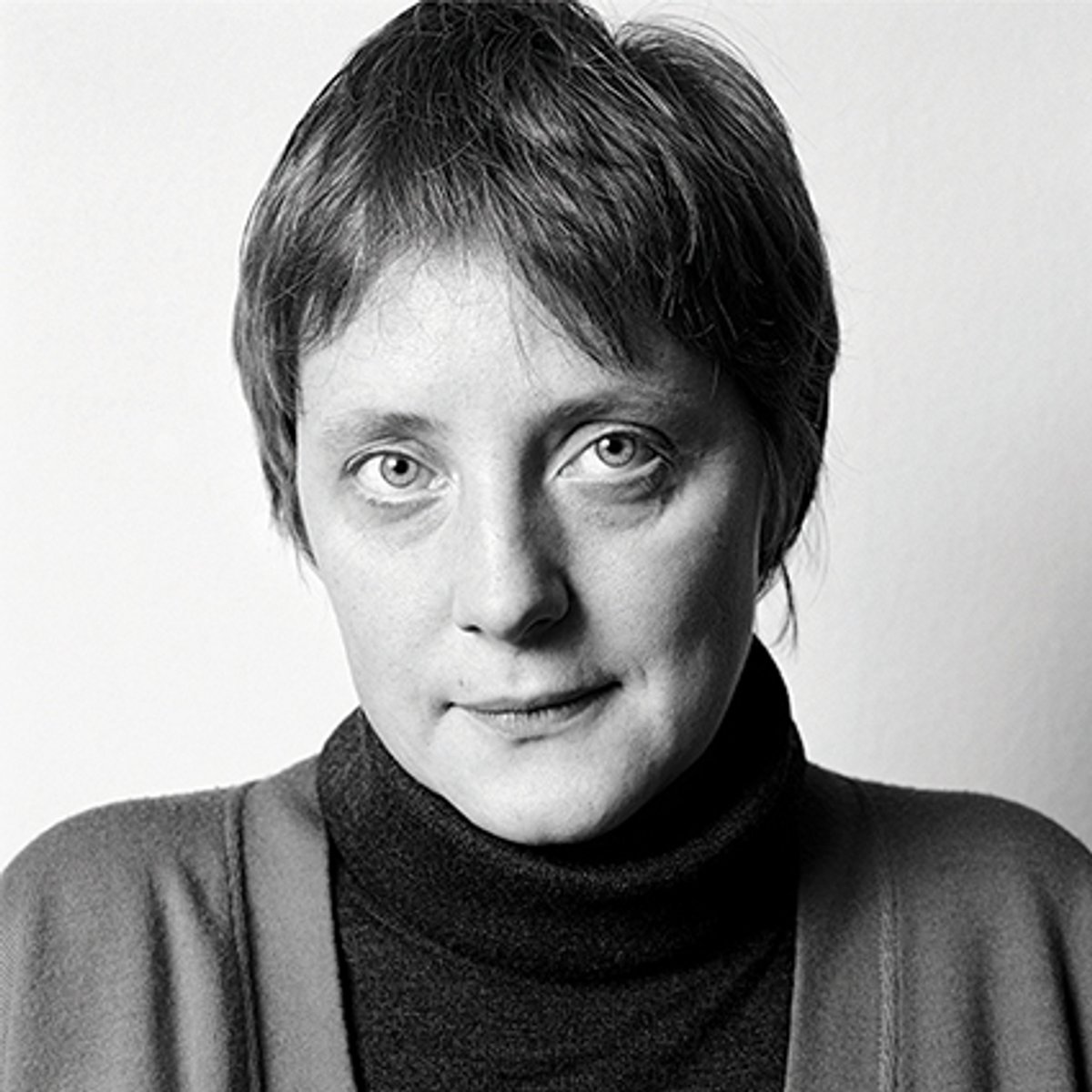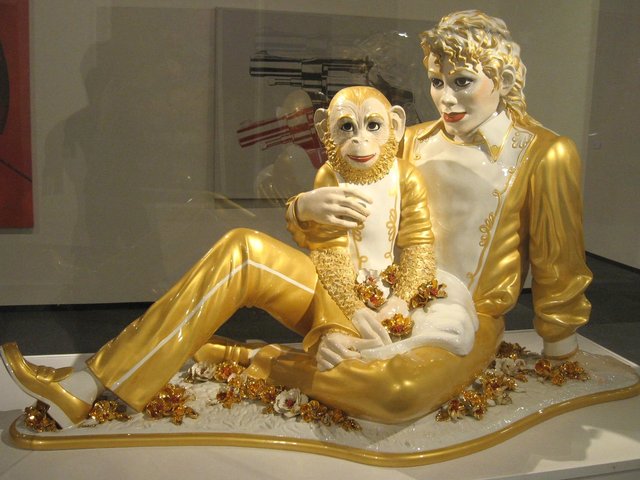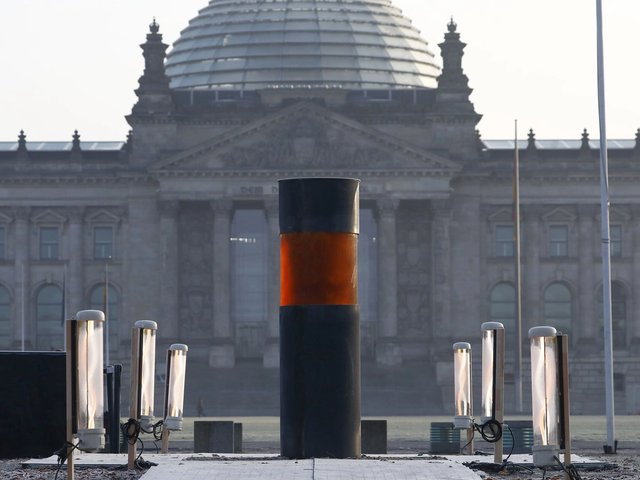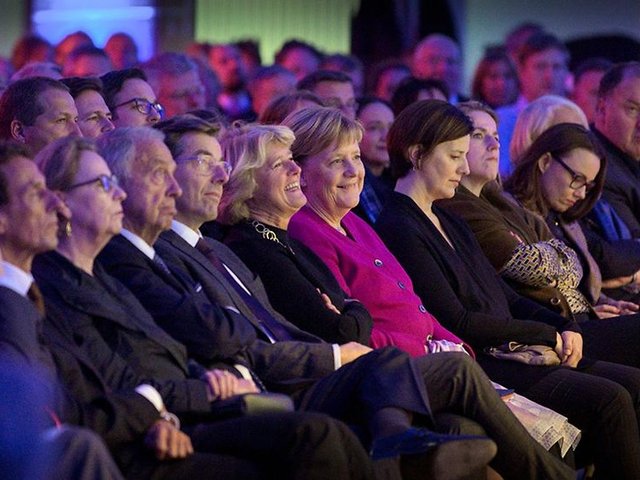When Herlinde Koelbl first photographed her in 1991, Angela Merkel was a political novice. A physicist catapulted into politics by the fall of the Berlin Wall, she had risen through the ranks of the East German Christian Democratic Union to become a protegée of Chancellor Helmut Kohl. He had recently appointed her minister for women and youth in his cabinet.
“From the beginning, I saw a certain energy and strength in her and thought: ‘I want to follow her path in politics,’” Koelbl says. Merkel’s inexperience also made her an interesting subject for Koelbl’s eight-year project, Traces of Power. Every year, from 1991 to 1998, she photographed and interviewed Merkel. The portraits continued after she became chancellor. The result, now published as a book by Taschen, is a subtly revealing 30-year chronicle of the effects of power on an individual who wields it.
Germany’s first woman chancellor, Merkel is also the first chancellor to have stepped down before losing an election to make way for a new candidate to represent her party, the CDU. She narrowly missed also beating Kohl’s record as the longest-serving chancellor, when the Social Democrats, Green Party and Free Democrats announced their coalition deal earlier this week.
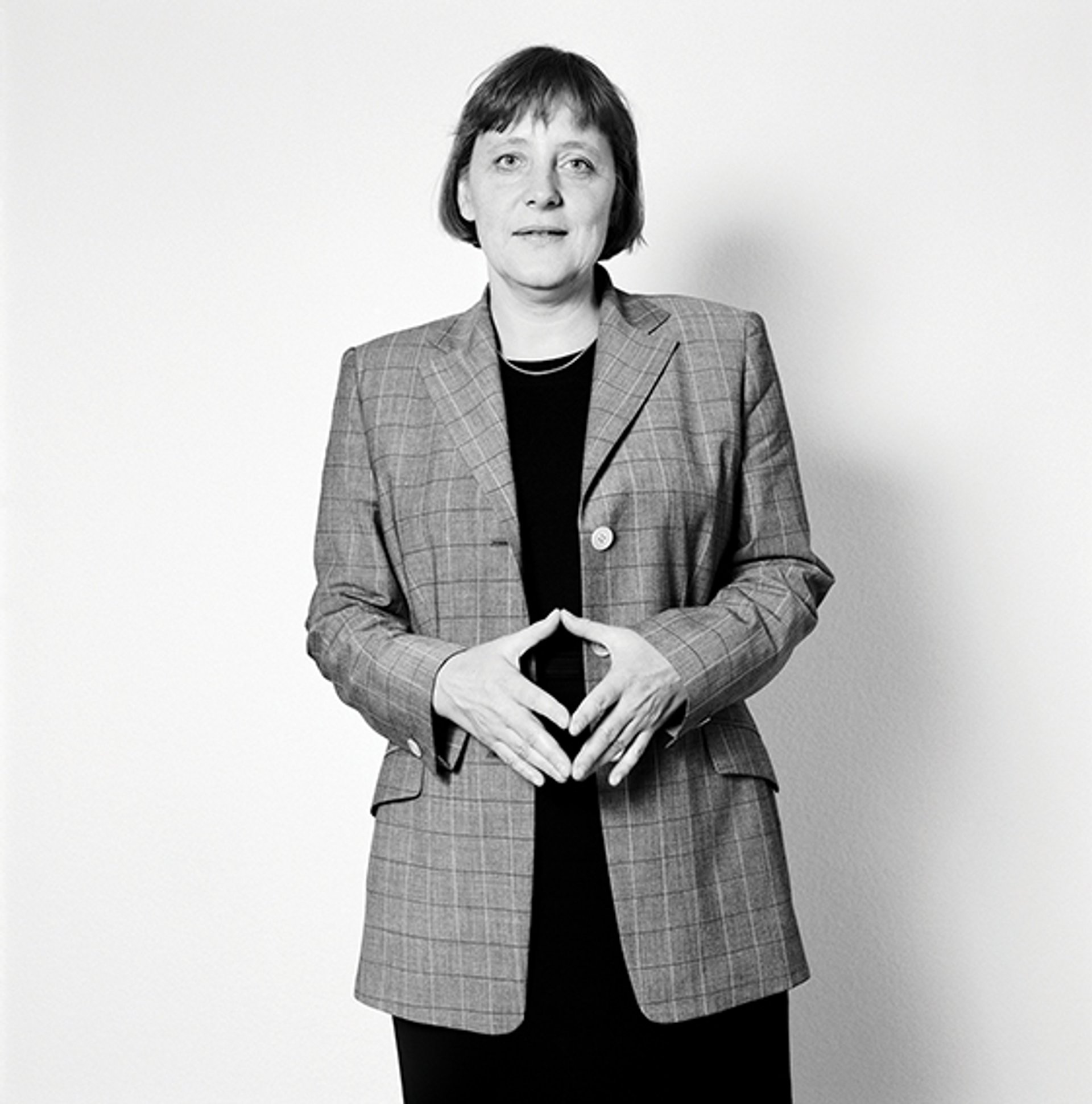
Angela Merkel in 1998 © Herlinde Koelbl
Koelbl was primarily interested in the woman behind the office: what Merkel had to learn and the personal price she paid for power. That is part of the reason, she believes, that Merkel agreed to her project. The interviews are extraordinarily frank for a politician known to guard her privacy—perhaps in part because Koelbl was not working to a daily news schedule and did not plan to publish them for eight years.
She took two portraits each time, a head shot and a three-quarter-length standing pose, and avoided any of the trappings of power. The backdrop is a white wall and a simple chair. “Most politicians put on a certain smile when they see a camera,” Koelbl says. “I asked her to look at me with a calm, open gaze. Then the posing was gone.”
The portraits and interviews reveal how Merkel grew in confidence over the years. In 1991, there is a shyness in her upturned gaze to the camera. She modestly, but perhaps realistically, attributes her rapid rise through the ranks of the CDU “to lucky circumstances”, especially her East German upbringing.
“Were I to have grown up in West Germany with the same qualities, it wouldn’t have happened to me,” she tells Koelbl. The self-critical, analytical approach that helped her to overtake so many more experienced colleagues is also on show: “I’m not yet as hardnosed as someone in politics probably has to be in the long term,” she says.
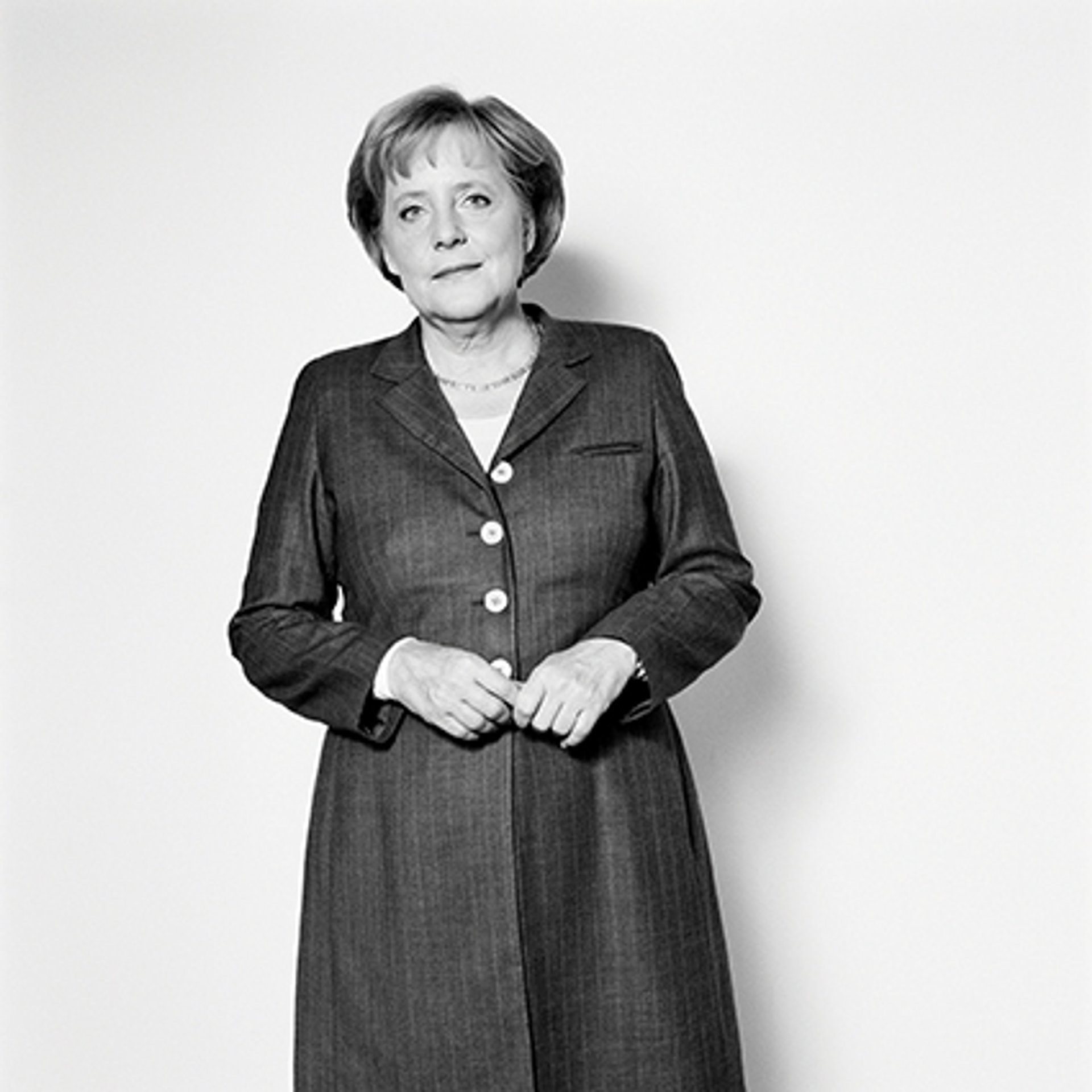
Angela Merkel in 2008 © Herlinde Koelbl
Merkel does not often act on impulse. Instead, “like a chess-player, she holds back, observes and analyses before she acts”, Koelbl says. In 1996, when Merkel was serving as environment minister, Koelbl asked her about an altercation over energy policy with Gerhard Schröder, then the governor of the state of Lower Saxony. He had discredited her in public.
“I told him that someday I will put him in a corner, too,” Merkel says. “I still need a little time, but the day will come. I’m looking forward to it.”
And sure enough, the day came; she replaced him as chancellor in 2005 after winning the election. Like many of her male political rivals, Schröder had underestimated Merkel.
“Many think I look so friendly, so unassuming, and think one could get the upper hand over me,” she told Koelbl. “But it is not quite the way they imagine it. Challenging people is much easier for me than some think.”
As the years pass, Merkel’s gaze becomes more direct, her stance more upright and firm. The joined fingertips in her trademark “Merkel diamond” pose makes its first appearance in a 1998 photograph.
She tells Koelbl that because of the constant exposure, she has learned to disguise her emotions: “My biggest worry is that one becomes increasingly reserved,” she says. “Today I can hold a steady gaze and not show everyone what I am thinking each moment. People actually do want open, caring, kind politicians, but then again, they don’t. They don’t want to see it at all when one is afraid or worried, or when one doesn’t know something.”
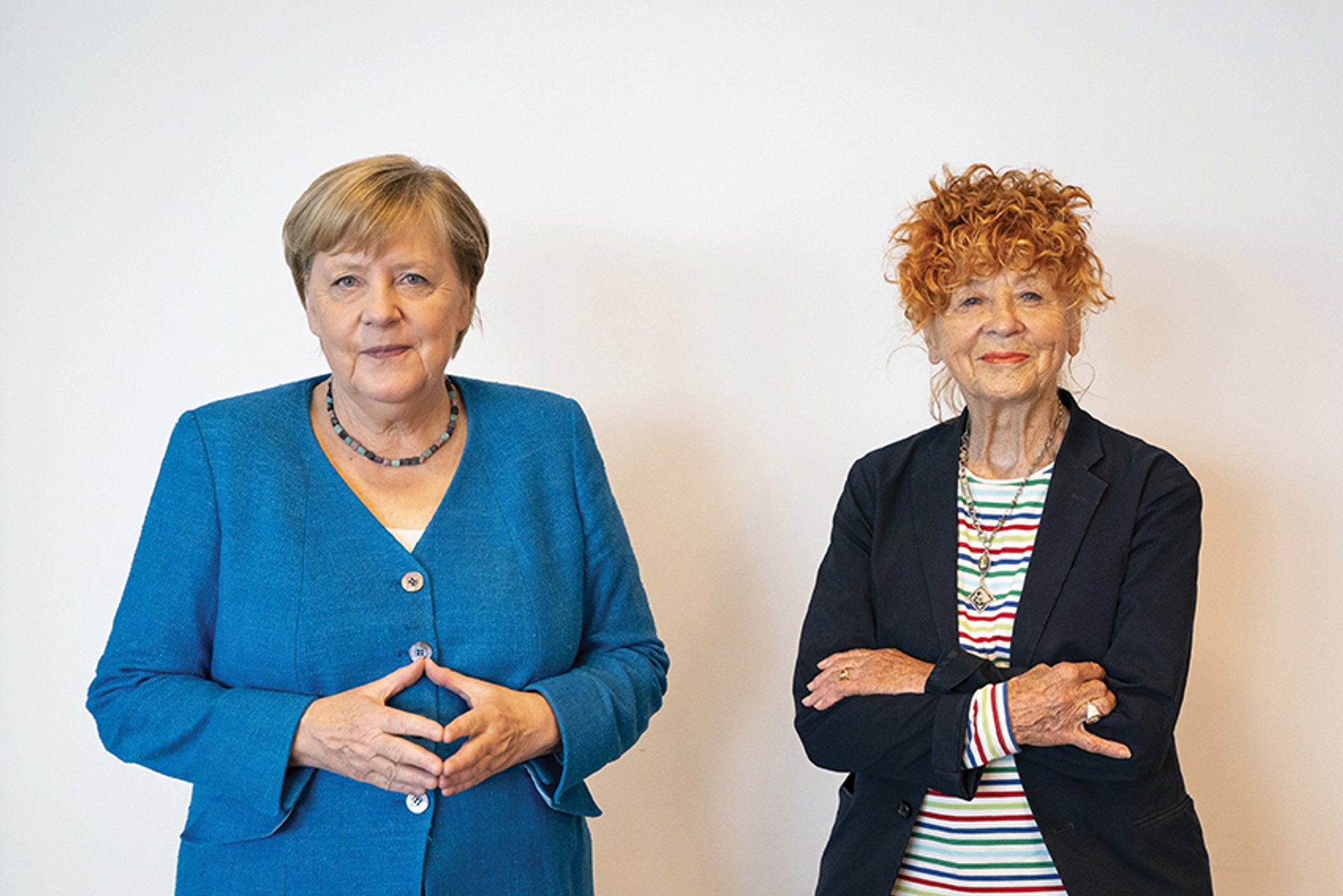
Angela Merkel with the photographer Herlinde Koelbl © Presse- und Informationsamt der Bundesregierung
While her lack of vanity—unusual for a politician—is often commented on, Merkel admitted in the 1998 interview that “I am apparently really vain enough to be interested in your project,” in response to Koelbl’s question about whether she had enjoyed the interviews and portraits.
“In the beginning I found the questions incredibly irritating,” Merkel answers. “I rebelled against it and was anything but happy when you were standing at the door again. I thought, ‘What is this nonsense? The book won’t be published for eight years, one has to appear in the press today.’ But then I noticed that suddenly I would ask myself: Was Mrs Koelbl actually here already this year?”.
Even after 16 years as chancellor, Merkel has managed what many in power do not—to keep her feet firmly on the ground. She still visits her local supermarket to buy groceries. She has made clear that after she steps down, she has no interest in taking high office again any time soon.
“She might sleep a lot to start with,” Koelbl speculates. “But she won’t disappear entirely. She is an energetic woman. I can’t see her retreating to her dacha full-time.”
Koelbl thinks she will be missed. “My projects have taken me to many countries, and I am aware of how much Germany’s reputation has gained from Angela Merkel and her policies,” she says. “Germany is seen as reliable.”
• Angela Merkel by Herlinde Koelbl was published by Taschen this month. Koelbl’s portraits of Merkel will also be exhibited at the Deutsches Historisches Museum in Berlin from 29 April to 4 September 2022


